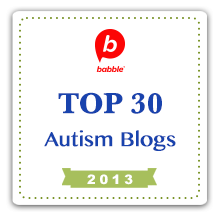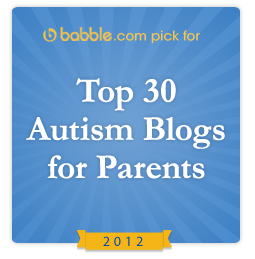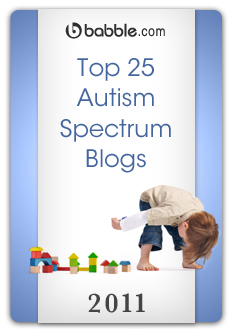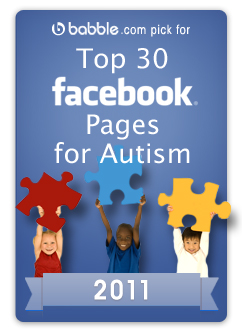Ok so, I’ve argued with myself about whether or not I’d ever even discuss this topic, much less write about it but today I’ve volunteered my time to be a part of a 24 hour “shout out” on November 1st. It’s for this reason that I think it’s only fair that I explain why. Also, doing so just days before the actual day will help with anyone wondering if I am discussing this just for search engine traffic or so forth.
The Premise
The idea behind this ‘event’ is that people should not use Facebook or Twitter for the entire day of November 1st in an attempt to experience what it is like to lack the communication ability of those with Autism.
You visit https://communicationshutdown.org/ and donate some money, they send you a program that you install and it will update your Facebook and Twitter accounts to announce that you are not going to be there that day in the name of Autism.
You spread awareness, you experience the lack of communication, someone gets the donation, the world is happy.
Speaking for those that can not speak for themselves
The whole idea of Autism Awareness and Advocacy is that we speak out for those people/children that can not speak for themselves. As such, it makes very little sense to silence ourselves for them.
Also, I’m not even Autistic but even I feel it’s pretty insulting to think that not visiting a couple of websites could ever give you any insight into what it’s like to have Autism. That’s like saying that because you were in chess club, you know what it’s like for children in bad neighbouurhoods to get mixed up in violent gangs.
Not saying anything is the new “what’s your bra colour”
Remember last year when Facebook women started putting their bra colour into their status as a fun little “shhh… don’t tell the boys” game? And after most said it was childish and stupid, they attached the Breast Cancer Awareness mantra to it and suddenly it became a worthy cause to participate in.
The problem was that most of the guys and even a very large number of girls simply never got the message. The problem with “shhh” is that noone knows why you’re “shhhh”ing unless they ask and really, who cares enough to ask? No one.
So this communication shut down will very likely become the next viral campaign that totally went by most people’s attention spans without a second glance until some other day when they caught a news article or someone says something off handed and they go “oh! That’s what that was about?”
Flawed target audience
If this is truly aimed at giving people a taste of what it is like to have Autism, why would I need this? My son has Autism. Many of the people being asked to participate have Autism themselves. Do we really need this exercise to experience it?
It seems to me that this needs to be focused on the general public more than those of us that are already advocates or that already have Autism. It’s a great starting point as we can reach out to more people than they could alone but obviously the approach was flawed. We should have been given tools (banners, ads, market material, links) to prompt readers rather than asking us to just donate like any other person.
Donation Information
So the site lists a rather impressive list of charities/organizations which will be receiving these donations… it even promises that your donation will go to a place that is in your country. This is impressive. View partners.
What is not impressive is that we have no idea who the people are putting this on, nor how accountable they will be. Will we see records and breakdowns of where the money went? Will we get autobiographies of those involved? Do we know what will be funded with the money?
Furthermore, why can’t we just donate to the charity/organization directly and keep on Tweeting and Facebooking? Facebooking? Is that right?
Also, why can’t we just have the program to update our accounts and post about our attempts at Autism Awareness without having to donate? What if I want to participate because it’s a worthy cause and want to get the experience but can’t afford money to donate because we are living with Autism ourselves and could probably use that donation money for our own family?
The Alternative
Some blogs are pushing for an explosion of shout outs, a total opposite to a communication shutdown. They’ve even come up with some tags #AutismShoutOut to use on Twitter to show your support.
To me this makes a lot more sense but shouldn’t this be done in April? Autism Awareness month? Why is this being done in November anyway?
I don’t think I can endorse this approach either really, since it will likely get quite annoying and/or repetitive after the first few hours. But it sure does beat not saying anything. Cause no one will know why and you can’t tell them!
What I am doing
As I said in the first paragraph, I have decided to participate in “Communicate and Educate Speak out and Speak Loudly” 24 hour chat held by http://thecoffeeklatch.com/ on twitter: @TheCoffeeKlatch
I will be co-moderating from the 4pm to 5pm EST hour, they’ve organized that there will be moderators for an entire 24 hour period from 9am to 9am. This means that information, questions, advice, myths, stories and more will be shared for the entire duration.
If this isn’t the opposite to not communicating for 24 hours, I don’t know what is.
And so, I’ve decided that since I agreed to become a part of it, I should explain why I made the decision. Not that I owe it to anyone, but that I feel this decision could raise the question.
My suggestion for you?
I have three.
There’s really nothing wrong with taking part in the communication shut down. It will raise awareness, they will get donations to good charities. If you wish to do it, good on you. You’re doing something great for the Autism Community.
There’s nothing wrong with not taking part in it either. There’s nothing wrong with seeing flaws in the plan and doing the exact opposite. Speak out, speak loud and speak proud. Raise awareness as you see fit. If you do wish to take part in the chat, in which I will be a part of, simply add #tck to your tweets or use their custom chat room which will help you streamline the conversation much easier: http://tweetchat.com/room/tck
Finally, there’s nothing wrong with just going about your day as you always have. Talk Autism, talk sports, family.. anything and everything. You are involved already, you’re already doing your part. Feel proud in that. You should.














